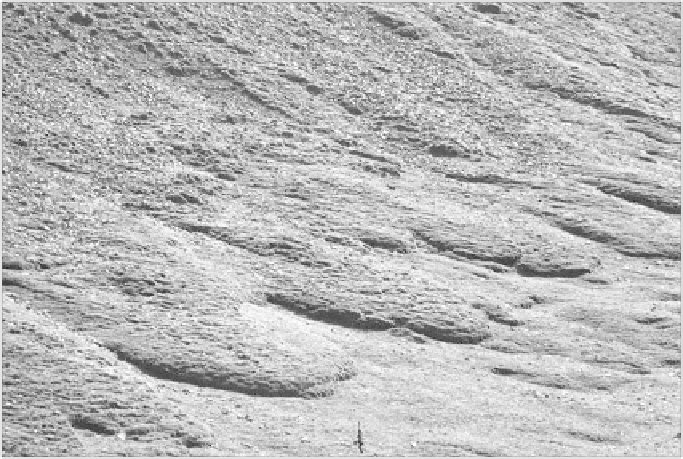Geoscience Reference
In-Depth Information
snow, ample rainfall, spring) acquires a sludgy consistence and abruptly
slides over the slope on which it leaves a cut (
detachment
knick point
)
and a hump (
solifluction lobe
). If the phenomenon is repeated regularly,
the slope, called
solifluction slope
, takes on a typical bumpy appearance
(Fig. 2.12c and Fig. 2.13).
Fig. 2.13
Small solifl uction lobes in Vanoise in the alpine grassland. Height of a lobe 30
cm; length several metres. On the upper slope, the C horizon is exposed in places (gravel).
Photo
:
author.
Another case deserves attention, that of tropical soils. On hillslopes
they often have a very complex internal structure touched upon earlier in
Chapter 1 (Fig. 1.1). Horizontal horizons or horizons parallel to the slope
are not seen but volumes with complex shapes following one another
laterally and vertically, creating rather abrupt boundaries of different
forms (undulations, scarps, etc.). In this context also mass movements
occur, favoured by the long duration of pedogenesis. Figure 2.14,
reinterpreted by us, but rigorously modelled on a structure splendidly
described in the tropical environment by Dubroeucq and Volkoff (1998),
very clearly demonstrates this mass movement that stretches, twists,
bulges or undulates horizons. Looking at the diagram, it will be seen
that we have found five arguments in favour of the effect of slope, too
many to be considered random.

